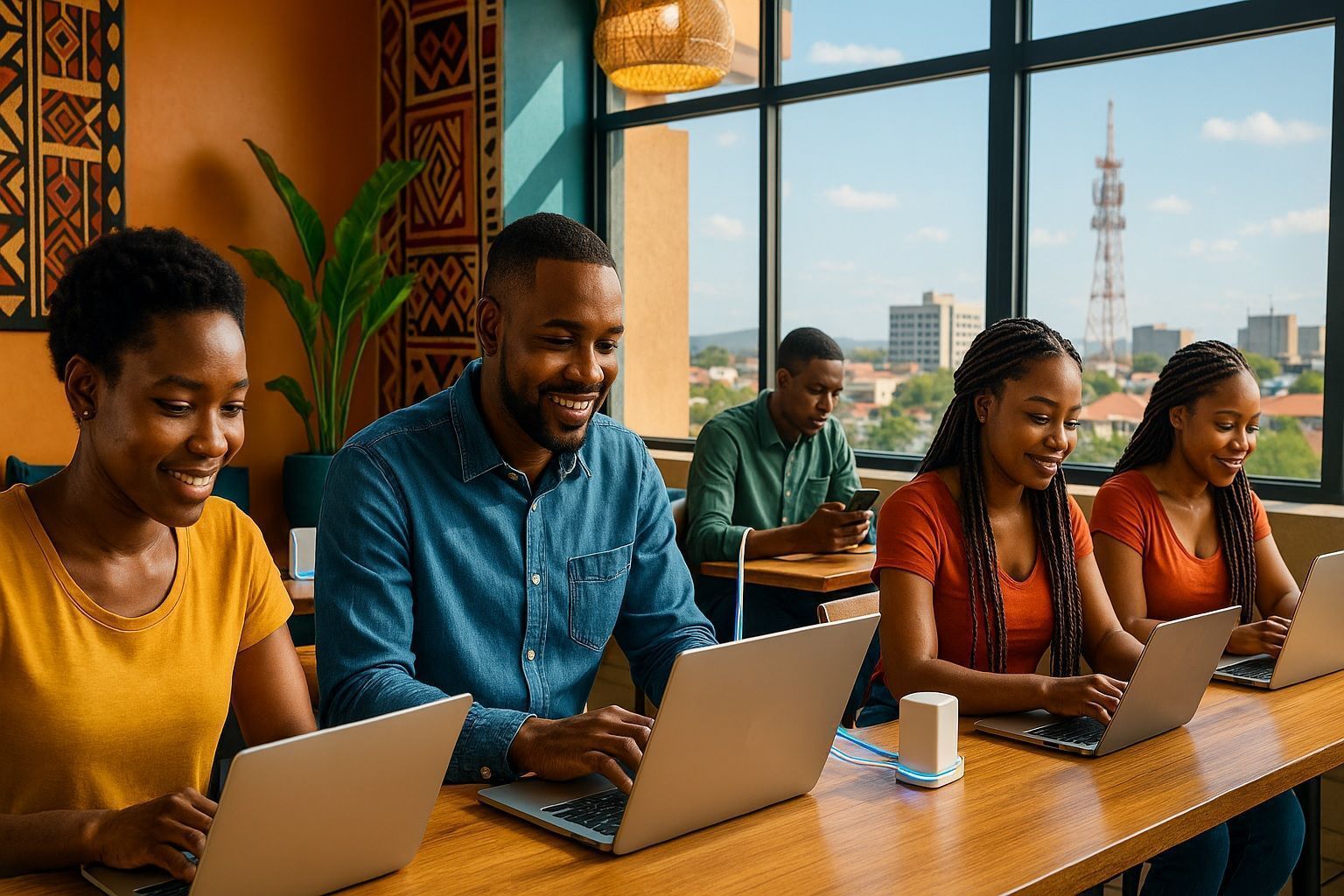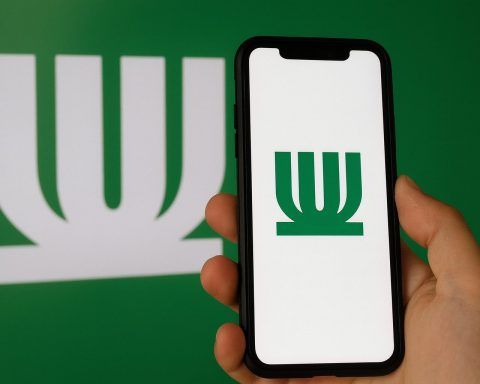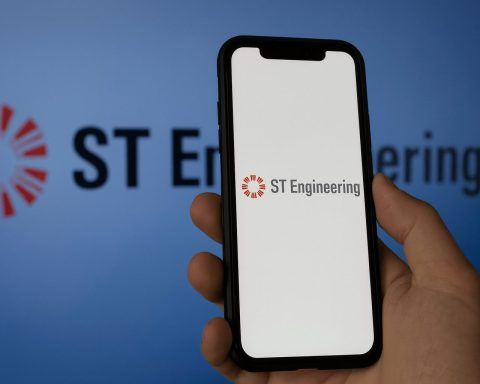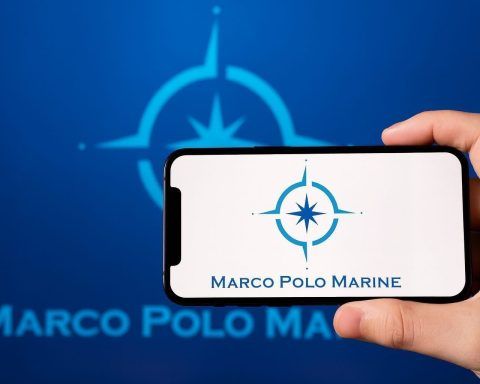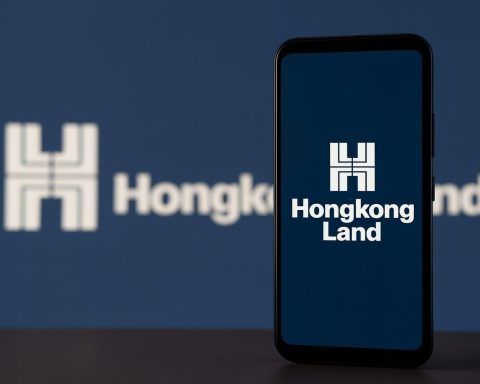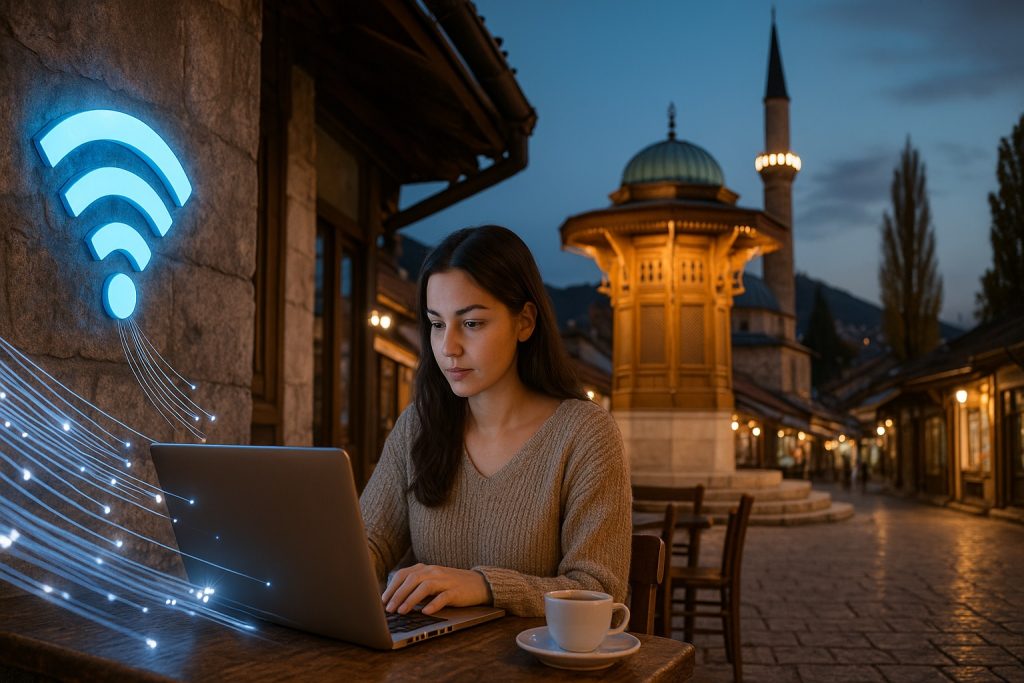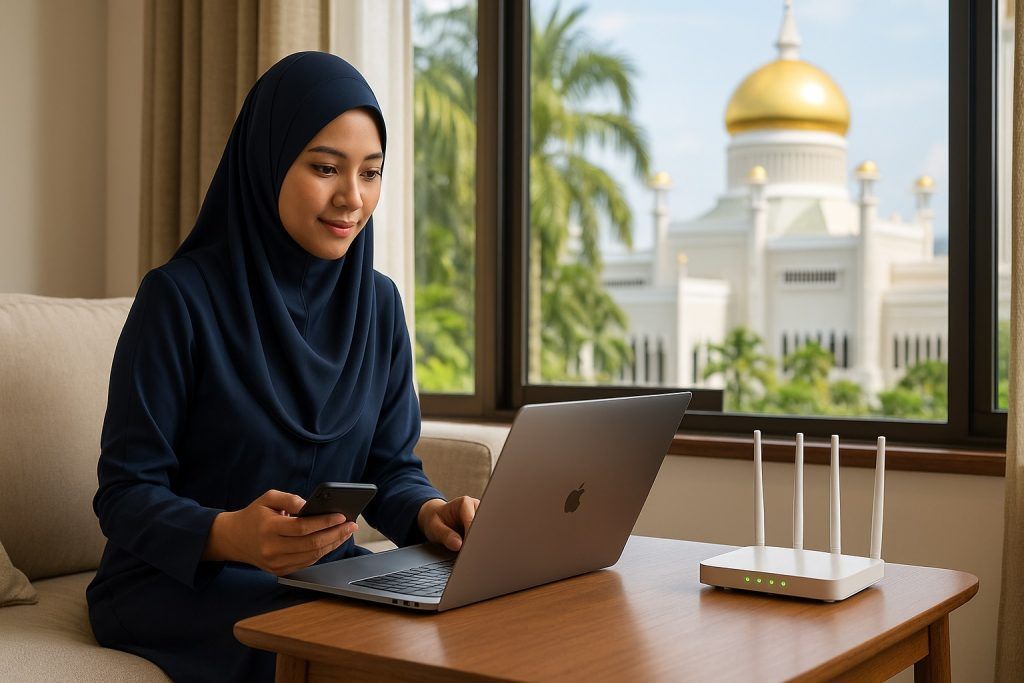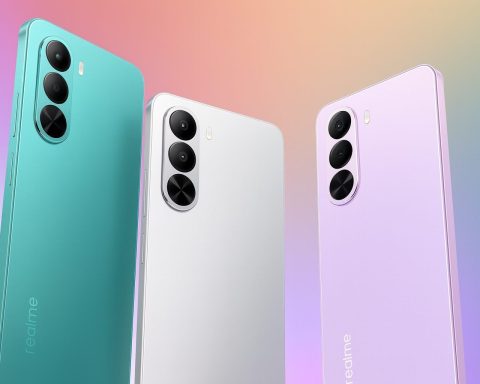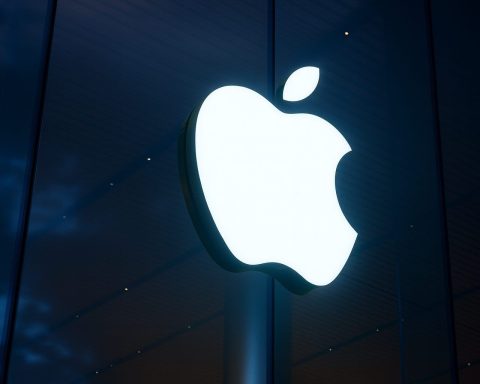- As of early 2024, about 2.09 million Batswana were internet users, representing roughly 77.3% of the population.
- Cellular penetration is around 185%, with mobile internet subscriptions at 2.93 million and fixed-line subscriptions at 164,000.
- Orange Botswana launched Africa’s first 5G network in 2022, initially covering about 30% of the population.
- SpaceX’s Starlink entered Botswana in August 2024 after BOCRA approved the license in May 2024, with Paratus Botswana becoming the first authorized Starlink reseller.
- BoFiNet operates the national fiber backbone and buys capacity from submarine cables like WACS and EASSy, becoming the largest provider of Botswana’s international bandwidth; as of 2021 it handled about 66 Gbps.
- SmartBots Village Connectivity launched in 2023, connecting 1,138 public facilities in 144 villages and providing free Wi‑Fi to about 1.6 million people.
- 4G coverage rose from 56% to 90% of the population between 2021 and 2022, and average mobile speeds reached around 21 Mbps by 2022.
- In 2022 Botswana was ranked the second most expensive country in the world for mobile data, at about 202 Pula per 1 GB.
- BoFiNet and government initiatives include the Digital Delta Data Centre (Tier III) and expansion of FTTH and public Wi‑Fi hotspots nationwide.
- Botswana’s regulatory environment is liberal, with BOCRA issuing PTO licenses to Mascom, Orange Botswana, and BTC and allowing foreign investment and VoIP/OTT services.
Botswana is undergoing a digital transformation, dramatically expanding internet connectivity across its population. In the past decade, internet use in Botswana surged from roughly 30% of the population in 2013 to over three-quarters by 2024 [1] [2]. This is notably higher than Africa’s overall internet usage (around 43% in 2023) and even above the global average (66%) [3]. Driving this “digital leap” are two pivotal technologies – widespread mobile smartphone networks and new satellite broadband services – which together are bridging the connectivity gap even in remote areas of the Kalahari Desert. However, despite these advances, Botswana faces challenges in ensuring reliable, affordable internet for all. This report examines the state of internet access in Botswana: penetration rates and urban–rural divides, key service providers and technologies, the growing role of satellite internet (e.g. Starlink), infrastructure hurdles and recent initiatives, affordability and access issues, and the policy landscape. Regional comparisons are also provided to put Botswana’s progress in context.
Internet Access and Penetration in Botswana
Internet use in Botswana has grown rapidly and now reaches a large majority of citizens. As of early 2024, an estimated 2.09 million Batswana were internet users, about 77.3% of the population [4]. (By some measures, usage exceeded 80% by 2025 [5], placing Botswana among the top African countries for internet penetration, alongside South Africa and Mauritius.) This marks a huge jump from just a decade ago – for example, in 2013 only ~30% of the population used the internet [6]. The surge can be attributed largely to mobile broadband growth and greater network coverage. Mobile phones are the primary access medium: Botswana has cellular penetration around 185% (many people own multiple SIMs/devices) [7], and mobile internet subscriptions (2.93 million) vastly outnumber fixed-line internet subscriptions (164,000) [8]. The ubiquity of mobile devices has made the smartphone the gateway to online services for most Batswana.
That said, a digital divide persists between the well-connected urban centers and the rural hinterlands (including the sparsely populated Kalahari region). About 73% of Botswana’s 2.7 million people live in urban areas [9], which enjoy far better connectivity than rural villages. In 2019, roughly 63.5% of households nationwide had internet access – but the distribution was highly skewed: nearly 78% of the households with internet were in cities or urban villages, while only 22% were in rural villages [10]. In other words, urban and peri-urban communities comprise the majority of internet users, whereas remote rural communities remain less connected. Large distances and low population density in the Kalahari and other rural areas make network rollout challenging. Many villagers rely on patchy mobile signals or travel to towns for connectivity. Addressing this urban–rural gap is a top priority for Botswana’s digital inclusion efforts.
Key Internet Service Providers and Technologies
Botswana’s internet services market is served by a mix of mobile network operators, a national infrastructure wholesaler, and several independent ISPs. The Botswana Communications Regulatory Authority (BOCRA) licenses three Public Telecommunications Operators (PTOs) for consumer services: Mascom Wireless, Orange Botswana, and Botswana Telecommunications Corporation (BTC) [11]. A fourth operator, BoFiNet (Botswana Fibre Networks), provides wholesale backbone infrastructure to the others [12]. Below is an overview of the major players and the technologies they use:
- Mascom Wireless: The leading mobile operator with about 43% of mobile subscribers [13]. Mascom (majority owned by MTN Group) offers 2G/3G/4G nationwide and has begun rolling out 5G services. In November 2022, Orange (Mascom’s competitor) launched Botswana’s first 5G network covering 30% of the population (Gaborone, Francistown) [14] [15], and Mascom has also started 5G in Gaborone. These high-speed networks enable not just mobile use but also fixed wireless broadband to homes, which is crucial in areas where laying fiber is impractical [16].
- Orange Botswana: The second-largest mobile operator (~39% market share) [17] and part of the Orange SA group. Orange provides extensive 2G/3G/4G coverage and was the first to launch 5G in Botswana (in 2022) as noted above [18] [19]. Orange is leveraging 5G for home internet (fixed wireless access), viewing it as a cost-effective way to reach low-density areas where fiber rollout is uneconomical [20]. Alongside mobile services, Orange and Mascom also offer internet dongles, Wi-Fi routers, and other data products.
- Botswana Telecommunications Corporation (BTC): A formerly state-owned telecom (now semi-privatized) that operates both fixed-line and mobile services (its mobile division is branded BeMobile). BTC has around 18% of mobile subscribers [21], making it the smallest mobile operator, but it remains the country’s only fixed broadband provider via copper DSL and an expanding fiber network. BTC, in partnership with BoFiNet, has deployed fiber-to-the-home/business (FTTH/FTTB) in parts of Gaborone and other towns, though most fixed-line users still rely on ADSL or fixed-wireless links. BTC’s national telephone network is the backbone for many government and business internet connections, and it interconnects with regional submarine cable gateways through BoFiNet.
- BoFiNet (Botswana Fibre Networks): A wholly government-owned wholesale operator that builds and leases out telecom infrastructure. BoFiNet manages an extensive national fiber backbone spanning cities, towns, and many villages [22]. It is the largest provider of international bandwidth, sourcing capacity from submarine cables via South Africa and Namibia (e.g. SEACOM, WACS) and distributing it domestically [23]. BoFiNet’s fiber network underpins the country’s broadband capability – all major ISPs ride on this shared backbone. The company is also involved in last-mile projects (e.g. fiber-to-premises in business districts, public Wi-Fi hotspots, etc.) as part of Botswana’s digital infrastructure expansion [24] [25]. (More on these initiatives in a later section.)
- Independent ISPs: In addition to the big PTOs, Botswana has several private ISPs offering niche services. These include companies like Paratus Botswana, Nashua Botswana, OPQ Net, ICT Dynamix, Jenny Internet, and others [26]. Many of these specialize in fixed-wireless broadband, VSAT (satellite), or enterprise connectivity solutions. For example, Paratus (part of a pan-African telecom group) provides fiber and wireless links to businesses and has coverage in over 90% of the country via its network [27]. Paratus also operates data centers and, notably, has become a key reseller of Starlink satellite internet in Botswana (discussed below) [28] [29]. The presence of these ISPs adds competition in the broadband market, though the three mobile operators still dominate consumer internet access.
Overall, mobile broadband (3G/4G) is the workhorse of Botswana’s internet connectivity, given the vast area and mobile-centric usage. But significant efforts are underway to extend fiber optic infrastructure and fixed wireless networks, especially in urban centers and strategic economic zones, to improve speed and reliability. The combination of these terrestrial networks with emerging satellite options is redefining what’s possible even in the most isolated parts of the Kalahari.
The Role of Satellite Internet in Botswana
One of the most exciting developments in Botswana’s connectivity landscape is the arrival of low Earth orbit (LEO) satellite internet services. Traditionally, satellite internet in Botswana was limited to a few VSAT connections for remote mining camps, lodges, or government outposts – useful for basic needs but constrained by high latency and cost. This changed in 2024 with the introduction of SpaceX’s Starlink.
After a year of regulatory negotiations, Starlink officially launched in Botswana in August 2024 [30]. Botswana became only the sixth country in Southern Africa to host Starlink, following others like Zambia and Mozambique [31]. The service’s entry was not smooth initially – the Botswana Communications Regulatory Authority (BOCRA) had rejected Starlink’s first license application in early 2024 and even banned the use or import of Starlink kits at one point [32]. It took intervention by President Mokgweetsi Masisi (who met with SpaceX executives) to resolve issues, after which BOCRA approved Starlink’s license in May 2024 [33]. By August, Starlink was open for sign-ups in Botswana, with significant implications for the ISP market.
Starlink offers high-speed, low-latency broadband via a constellation of LEO satellites – a stark improvement over legacy geostationary satellite links. For Botswana’s many remote settlements and farms in the Kalahari, Starlink provides a new way to get online where cell towers or fiber lines don’t reach. Residents anywhere in the country can order the Starlink kit (a small satellite dish and Wi-Fi router) and get connected once activated. The service is marketed as plug-and-play: hardware costs about P4,820 ($363) for the dish and monthly subscription is P688 (~$52) [34]. While the upfront cost is high, the monthly fee is comparable to high-end mobile data plans, and the connection speed (often 50–150 Mbps) is on par with urban broadband.
Local ISPs have partnered in the rollout. Paratus Botswana became the first authorized Starlink reseller, stocking equipment locally and offering customer support and installation services [35] [36]. Paratus specifically targets rural consumers and enterprises that previously had no reliable option for fast internet [37] [38]. “Starlink is a game-changer… delivering high-speed connectivity throughout the country,” said Paratus Botswana’s Managing Director, noting that demand was especially high from remote communities and industries (mines, tourism camps, etc.) that rely on resilient links [39] [40]. By late 2024, Starlink kits were reportedly selling out in Gaborone as early adopters jumped at the opportunity [41] [42].
Besides Starlink, other satellite services are also available or emerging: OneWeb, another LEO satellite network, has signaled plans in Africa (though not yet active in Botswana), and traditional VSAT providers (using geostationary satellites) continue to operate for niche needs. Providers like YahClick (from Yahsat) or Intelsat offer enterprise VSAT connectivity in Botswana through local agents, albeit at higher cost and latency than Starlink. In addition, Botswana’s government uses satellites for specific projects (such as connectivity in wildlife parks or border posts). But it is Starlink’s entrance that has truly raised the profile of satellite internet in the country. Policymakers and consumers alike see it as a viable tool to finally connect the hardest-to-reach areas – the vast cattle posts, desert villages, and rural schools that terrestrial networks have struggled to serve. If uptake grows, satellites and smartphones together could virtually erase Botswana’s remaining internet dead zones.
Infrastructure Challenges and Recent Connectivity Initiatives
Despite notable progress, Botswana’s connectivity is constrained by various infrastructure challenges. A major hurdle is geography: the country is landlocked and sparsely populated, which makes both international and domestic network infrastructure expensive to deploy. Botswana lacks direct access to any submarine internet cables, so it must connect via neighboring countries for global bandwidth [43]. This reliance on transit links through South Africa, Namibia, and Zambia has historically resulted in higher costs and occasional bottlenecks. However, the government (via BoFiNet) has worked to secure diverse routes – for instance, BoFiNet purchases capacity on multiple undersea cables (like WACS on the Atlantic coast and EASSy on the Indian Ocean side) to ensure redundancy [44]. BoFiNet’s international gateways in South Africa link to regional internet exchange points, bringing in tens of gigabits of bandwidth that are then distributed over its national fiber backbone [45]. As of 2021, BoFiNet was handling about 66 Gbps of incoming international bandwidth for Botswana [46], a figure that has likely grown with demand.
Within the country, covering remote areas is the other big challenge. The Kalahari Desert and rural bush present difficult terrain with low user density, deterring private telcos from building infrastructure there purely for profit. To address this, Botswana has a Universal Access and Service Fund (UASF) that subsidizes network expansion in underserved areas [47] [48]. Using UASF financing, mobile operators have extended 3G/4G coverage to many rural villages over the past few years. According to BOCRA, these efforts helped raise 4G population coverage from 56% to 90% in the 2021–2022 period alone [49]. In practice, this means even quite remote villages now have at least a basic 4G signal. Average mobile internet speeds also improved (to ~21 Mbps by 2022) due to upgrades of existing towers and rollout of new base stations [50]. However, coverage “percentage” can mask quality issues – many rural towers are low-capacity, and backhaul links (often microwave relays) can get congested, leading to slow speeds outside urban centers.
To bolster last-mile connectivity, the government launched the ambitious SmartBots Village Connectivity project in 2023. This project aims to connect over 500 villages with high-speed internet by equipping public facilities (schools, clinics, community centers) with broadband and Wi-Fi hotspots [51] [52]. The idea is to provide a standardized level of connectivity and user experience across the country, so even a person in a small village can get online (at least at designated hubs) with service comparable to that in Gaborone. President Masisi, at the launch, emphasized that connectivity is crucial for digital transformation in all sectors of the economy, and that village connectivity will drive Botswana’s development goals under Vision 2036 and international targets [53]. The UASF is funding this initiative, ensuring even “hard-to-reach” villages are included [54].
In its first phase, SmartBots connected 1,138 public facilities in 144 villages, providing free Wi-Fi at each site [55]. This covers an estimated 1.6 million people – roughly two-thirds of the population – who live in those village areas [56]. On an average day in 2024, about 120,000 to 130,000 users accessed the internet through SmartBots hotspots [57] [58]. Speeds are modest (up to ~10 Mbps per user) but sufficient for emails, learning resources, government services, and even streaming video in off-peak times [59] [60]. The impact has been dramatic: many students and job-seekers who previously could not afford data now congregate at these free Wi-Fi zones in the mornings and evenings to do schoolwork, download content, or apply for opportunities [61] [62]. Local youths also use them for entertainment – from watching football highlights on YouTube to trading cryptocurrency – gaining a digital exposure they wouldn’t otherwise have [63] [64]. Importantly, SmartBots has been credited as a key factor in raising internet penetration in Botswana from 42% in 2019 to 77% in 2024 by bringing online many low-income and rural users who were previously offline [65].
Other recent infrastructure investments include: a new Tier III national data center (the Digital Delta Data Centre) that BoFiNet is building to improve local hosting and cloud services [66]; expansion of fiber-to-the-home (FTTH) in neighborhoods and “fiber to the business” in commercial areas [67]; and rollout of hundreds of additional public Wi-Fi hotspots (complementing SmartBots) in places like malls, bus stations, airports, and border posts [68]. BoFiNet’s strategy document UNLEASH 2025 outlines these steps as part of the country’s broader digital transformation plan [69]. The U.S. government (USTDA) is also supporting Botswana with a grant for a feasibility study on expanding digital infrastructure to the most rural areas, signed in September 2023 [70]. All these efforts show a clear commitment by both government and industry to tackle the infrastructure gaps that have hindered connectivity in the past. While challenges remain – long distances, high costs, and maintenance in harsh environments – Botswana is steadily building the foundation for universal internet access.
Internet Affordability and Consumer Access
Closing the digital divide isn’t only about coverage – affordability of internet service is equally critical. In Botswana, the cost of data has historically been high, putting strain on households and excluding some segments from full internet use. As of 2022, one analysis ranked Botswana as the second most expensive country in the world for mobile data, with an average price around 202 Botswana Pula (≈ $15) per 1 GB [71] [72]. (This figure, based on a broad survey of plans, highlights that many users buy small ad-hoc data bundles at high unit cost. Indeed, premium offerings skew the average; for instance, 10 GB of mobile data was reported to cost up to P1,400 ($103) in 2024 [73] – nearly equivalent to the monthly minimum wage of P1,500 [74].) While cheaper packages exist, and prices have been slowly falling, internet access remains a significant expense for the average consumer in Botswana [75] [76]. The high costs stem from factors like the lack of economies of scale (small population), reliance on imported bandwidth, and relatively weak competition in some service segments. Operators have also argued that low population density drives up per-user network costs, which then get passed to consumers [77].
To improve affordability, the government and private sector have taken a multi-pronged approach. The aforementioned SmartBots free Wi-Fi program is one direct intervention to provide no-cost internet for those who can’t afford data – effectively an internet safety net in public spaces. Its popularity (over 1.6 million users, many of them youths [78]) underscores how badly such access was needed. Beyond that, regulators are pushing for more competitive offerings. BOCRA’s Universal Access fund has sponsored promotions and infrastructure sharing that allow smaller ISPs to enter new areas and potentially lower prices. For example, by getting wholesale bandwidth from BoFiNet at regulated rates, independent ISPs can offer home broadband in cities as an alternative to the mobile giants. This competition is gradually yielding more data options. The arrival of Starlink may also put downward pressure on prices: at about $52 for unlimited high-speed data, Starlink’s monthly fee could compel terrestrial ISPs to revisit their pricing of high-volume packages (which currently can be very steep, as noted above). Early indications suggest some businesses and even residential users in rural Botswana are opting for Starlink where mobile data was previously unaffordable or too slow.
It’s worth noting that Botswana scores relatively well on certain telecom affordability indices – for instance, the A4AI Affordability Drivers Index 2020 gave Botswana a score of 68.7/100 (among the higher in Africa) for policies and infrastructure that enable cheaper internet [79]. This reflects positive steps like spectrum management improvements, broadband planning, and gender-inclusion programs [80] [81]. However, these policies take time to translate into lower retail prices. The government’s National Broadband Strategy (2018) explicitly set targets to make internet pricing competitive and bring the cost of 1GB to under 2% of average monthly income (the UN affordability benchmark). Achieving this remains a work in progress. For now, many Batswana use cost-saving tactics – such as night-time data bundles, public Wi-Fi, or zero-rated services for social media – to manage their internet expenses.
In summary, while internet connectivity in Botswana is increasingly available, it isn’t yet equally affordable to all segments of society. The digital divide now is often one of income: urban, higher-income users can afford ample data and enjoy fiber or 4G speeds, whereas poorer or rural users may ration costly megabytes or rely on government-provided hotspots. Narrowing this gap is essential to fully realize the benefits of Botswana’s digital leap. Encouragingly, initiatives like SmartBots and the entry of new technologies (5G fixed wireless, Starlink) are expanding free or lower-cost avenues for connectivity. Continued regulatory focus on price competition – and perhaps regional integration to bring down bandwidth transit costs – will be key to improving internet affordability further.
Regulatory and Policy Framework
Botswana’s telecommunications sector is guided by a relatively liberal and forward-looking regulatory framework. The Botswana Communications Regulatory Authority (BOCRA) is the central regulator overseeing telecommunications, internet/ICT services, radio spectrum, broadcasting, and postal services [82]. BOCRA, established by an Act of Parliament (succeeding the older Botswana Telecommunications Authority), issues licenses for all operators and ensures compliance with national policies. Significantly, Botswana imposes no major restrictions on foreign investment or VoIP/OTT services in its telecom market [83]. This openness has allowed global players and technologies to enter – for example, Orange (France-based) operates freely, and services like WhatsApp or Skype are not blocked or specially regulated. Such a stance encourages innovation and competitive pricing. The licensing regime includes the Public Telecommunications Operator (PTO) licenses held by Mascom, Orange, and BTC which allow converged services (mobile and fixed), as well as ISP licenses for data-only service providers. BOCRA also manages spectrum allocation (e.g. for 4G/5G) and runs the Universal Access fund mentioned earlier.
On the policy side, Botswana was one of the early African nations to articulate an ICT vision. The Maitlamo National ICT Policy (2007) set out a roadmap for using technology to drive development, envisioning Botswana as a regional ICT hub. Maitlamo led to various e-government and connectivity projects over the past decade. Building on that, the government released a Broadband Strategy in 2018, which provided more concrete targets for infrastructure rollout and service quality [84] [85]. The strategy (often referenced as the National Broadband Strategy, NBS) aligns with Botswana’s broader development agenda (Vision 2036), aiming to transform the economy through digital innovation and make broadband universally accessible. It emphasizes public-private partnerships (like with BoFiNet), spectrum for mobile broadband, and addressing digital skills and cybersecurity. In fact, issues of digital literacy, data protection, and cybersecurity – initially gaps in Botswana’s policy – have started to be addressed under the Broadband Strategy and subsequent legislation [86]. For example, a Data Protection Act was enacted in 2018 (coming into force in 2021) to secure personal information, and Botswana participates in the ITU’s Global Cybersecurity Index (where it scored 53.06 in 2023, indicating moderate preparedness) [87].
The government has also launched a Digital Transformation Strategy (SmartBots) focused on the Fourth Industrial Revolution (4IR) and innovation [88]. SmartBots, as noted earlier, isn’t just about village Wi-Fi; it’s a wider program to digitize public services, encourage tech startups, and prepare the workforce for new digital jobs [89]. A SmartBots Innovation Hub (or lab) was set up to pilot projects in AI, blockchain, IoT, etc., reflecting the leadership’s intent that Botswana should not only consume technology but also produce tech solutions regionally [90].
In terms of regional integration, Botswana aligns with SADC (Southern African Development Community) goals on ICT. President Masisi highlighted that the village connectivity efforts support the SADC Broadband Targets for 2025, which likely include metrics for access and affordability region-wide [91]. Botswana is also a member of the Smart Africa Alliance, committing to continental initiatives like the “One Africa Network” (to reduce roaming costs) and cross-border fiber projects. These collaborations may further improve the policy environment and reduce costs in the long run.
Finally, regulatory moves have recently enabled new competition. The handling of Starlink’s licensing is one example – BOCRA initially was cautious, perhaps concerned about compliance and the impact on local ISPs, but ultimately granted the license, signaling willingness to embrace novel services that can benefit consumers [92] [93]. BOCRA also occasionally mandates price reductions (e.g. wholesale data price cuts to BoFiNet or mobile termination rate cuts) to ensure dominant players do not overcharge. As the sector evolves with 5G and satellite broadband, the regulator’s agile and pro-innovation approach will be crucial. So far, Botswana’s regulatory framework is seen as conducive to growth – a fact reflected in relatively high mobile penetration and the country’s ability to attract investment from major telecom companies [94] [95].
Regional Comparison and Outlook
Within the Southern African region, Botswana stands out in several ways. Its internet penetration of ~77–81% is among the highest in Africa, comparable to or slightly above South Africa (~79%) and far above neighbors like Namibia (~62%) or Zimbabwe (estimated <50%) [96] [97]. This is impressive given Botswana’s geographic challenges and population size. The country also pioneered some advances – for example, it was Orange Botswana’s launchpad for Africa’s first 5G network in 2022 [98] [99], putting it ahead of larger markets in adopting that technology. Botswana’s proactive approach to satellite internet is similarly notable; by 2024 it joined a small club of African countries with operational Starlink service, something even tech-heavy South Africa had yet to approve at that time [100].
On the other hand, Botswana lags in certain infrastructure aspects. Being landlocked, it is dependent on regional partners for bandwidth, unlike coastal countries such as Namibia or Mozambique that directly host submarine cable landings. Botswana also has a smaller economy and thus smaller telecom market than giants like South Africa or Nigeria, which means it faces higher unit costs for some investments. However, Botswana’s status as an upper-middle-income country has helped it avoid the very low internet usage seen in some low-income African states; its citizens have more purchasing power and the government has more resources to subsidize connectivity than in many places. In terms of internet affordability, Botswana is paradoxical – the average price of data is high by global standards [101], yet due to higher incomes, a larger share of people can still get online (even if sparingly). In much of Africa, affordability is a bigger barrier resulting in lower usage rates. Botswana is making strides to improve affordability (through free Wi-Fi and competition), which could make it a regional model if successful in driving prices down.
Looking ahead, Botswana’s “digital leap” is poised to continue. The combination of expanding 4G/5G mobile coverage, fiber backbone upgrades, and LEO satellite coverage means that the technical pieces for near-universal internet are falling into place. The focus is now on leveraging this connectivity for socio-economic development. We can expect more e-learning programs reaching rural schools via the internet, more e-health services connecting remote clinics to doctors, and growth in e-commerce and digital finance even in small villages. The government’s Vision 2036 explicitly aims for a knowledge-based economy, and improved internet access is fundamental to that goal.
Botswana will also have to manage new demands: as connectivity increases, so will data traffic and the need for network capacity. Continuous investment in backhaul (fiber and satellite gateways) will be required to prevent congestion. Cybersecurity and digital literacy will demand attention – bringing hundreds of thousands of first-time users online (as SmartBots has done) necessitates education on safe internet use. BOCRA and lawmakers may introduce updated regulations for data security, digital financial services, and perhaps content regulation as internet usage deepens.
Regionally, Botswana’s progress could spur neighboring countries to accelerate their own connectivity projects, potentially leading to more cross-border collaboration (for example, shared internet exchange points or joint fiber builds along transport corridors). There might also be competitive pressure: if Botswana achieves widespread affordable broadband, businesses and talent might be drawn to it over less connected countries, encouraging a positive “race to the top” in the region.
In conclusion, Botswana’s digital landscape in 2025 is one of rapid advancement coupled with persistent gaps. Smartphones have put the internet in the hands of a majority of Batswana, and new satellite services promise to reach the rest. Urban centers are moving toward high-speed gigabit connectivity, while rural communities are finally coming online through innovative public Wi-Fi and satellite links. The government and industry are working in tandem to overcome the hurdles of geography and cost. As satellites and smartphones redefine what’s possible in even the most remote parts of the Kalahari, Botswana is well on its way to ensuring that the benefits of the internet are shared by all its citizens – bridging distances, opening opportunities, and truly making a leap into the digital future of Africa.
Sources: The information in this report is drawn from a range of public data and reports, including Statistics Botswana publications on ICT usage [102] [103], BOCRA and trade reports on telecom infrastructure [104] [105], news articles on recent developments like Starlink’s launch [106] [107] and Orange’s 5G rollout [108], as well as analyses by TechCabal and others on the SmartBots initiative and internet affordability [109] [110]. These and other references are cited throughout the text for further reading.
References
1. en.wikipedia.org, 2. techcabal.com, 3. en.wikipedia.org, 4. datareportal.com, 5. www.statista.com, 6. en.wikipedia.org, 7. www.trade.gov, 8. www.statsbots.org.bw, 9. datareportal.com, 10. www.statsbots.org.bw, 11. paradigmhq.org, 12. paradigmhq.org, 13. www.trade.gov, 14. www.reuters.com, 15. www.reuters.com, 16. www.reuters.com, 17. www.trade.gov, 18. www.reuters.com, 19. www.reuters.com, 20. www.reuters.com, 21. www.trade.gov, 22. www.bocra.org.bw, 23. www.bocra.org.bw, 24. www.trade.gov, 25. www.trade.gov, 26. evokedigital.co.bw, 27. www.itweb.co.za, 28. www.itweb.co.za, 29. www.itweb.co.za, 30. techpoint.africa, 31. techpoint.africa, 32. techpoint.africa, 33. techpoint.africa, 34. techpoint.africa, 35. www.itweb.co.za, 36. www.itweb.co.za, 37. www.itweb.co.za, 38. www.itweb.co.za, 39. www.itweb.co.za, 40. www.itweb.co.za, 41. technomag.co.zw, 42. techpoint.africa, 43. www.trade.gov, 44. www.bocra.org.bw, 45. www.bocra.org.bw, 46. www.bocra.org.bw, 47. www.trade.gov, 48. english.news.cn, 49. www.trade.gov, 50. www.trade.gov, 51. english.news.cn, 52. english.news.cn, 53. english.news.cn, 54. english.news.cn, 55. english.news.cn, 56. english.news.cn, 57. english.news.cn, 58. techcabal.com, 59. techcabal.com, 60. techcabal.com, 61. techcabal.com, 62. techcabal.com, 63. techcabal.com, 64. techcabal.com, 65. techcabal.com, 66. www.trade.gov, 67. www.trade.gov, 68. www.trade.gov, 69. www.trade.gov, 70. www.trade.gov, 71. businessweekly.co.bw, 72. businessweekly.co.bw, 73. techcabal.com, 74. techcabal.com, 75. paradigmhq.org, 76. paradigmhq.org, 77. techcabal.com, 78. techcabal.com, 79. tribuneonlineng.com, 80. tribuneonlineng.com, 81. tribuneonlineng.com, 82. paradigmhq.org, 83. www.trade.gov, 84. paradigmhq.org, 85. paradigmhq.org, 86. paradigmhq.org, 87. www.statsbots.org.bw, 88. www.uneca.org, 89. www.uneca.org, 90. www.uneca.org, 91. english.news.cn, 92. techpoint.africa, 93. techpoint.africa, 94. www.trade.gov, 95. www.trade.gov, 96. www.statista.com, 97. en.wikipedia.org, 98. www.reuters.com, 99. www.reuters.com, 100. techpoint.africa, 101. businessweekly.co.bw, 102. www.statsbots.org.bw, 103. www.statsbots.org.bw, 104. www.trade.gov, 105. www.trade.gov, 106. techpoint.africa, 107. techpoint.africa, 108. www.reuters.com, 109. techcabal.com, 110. techcabal.com
